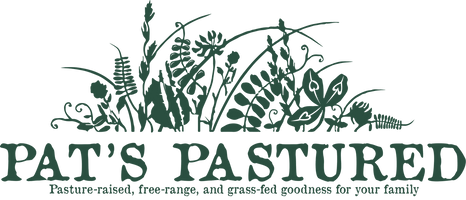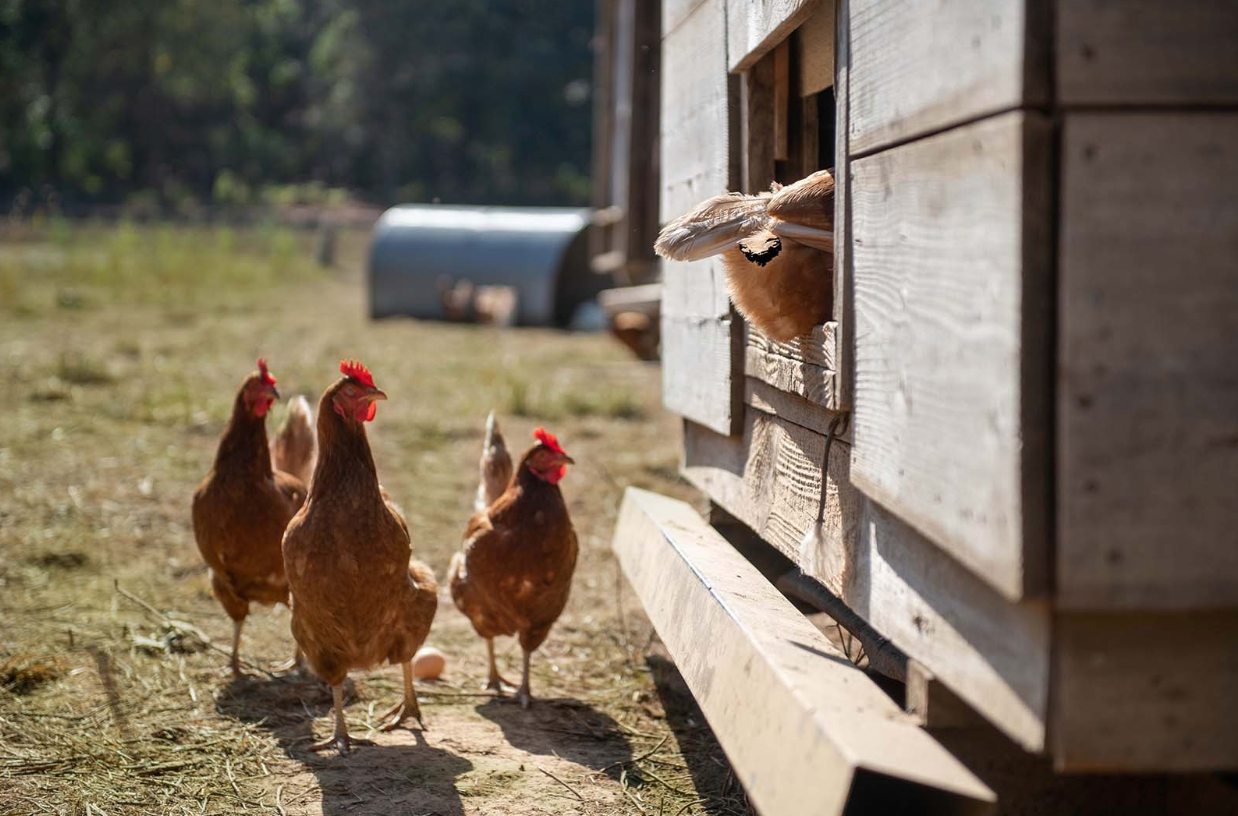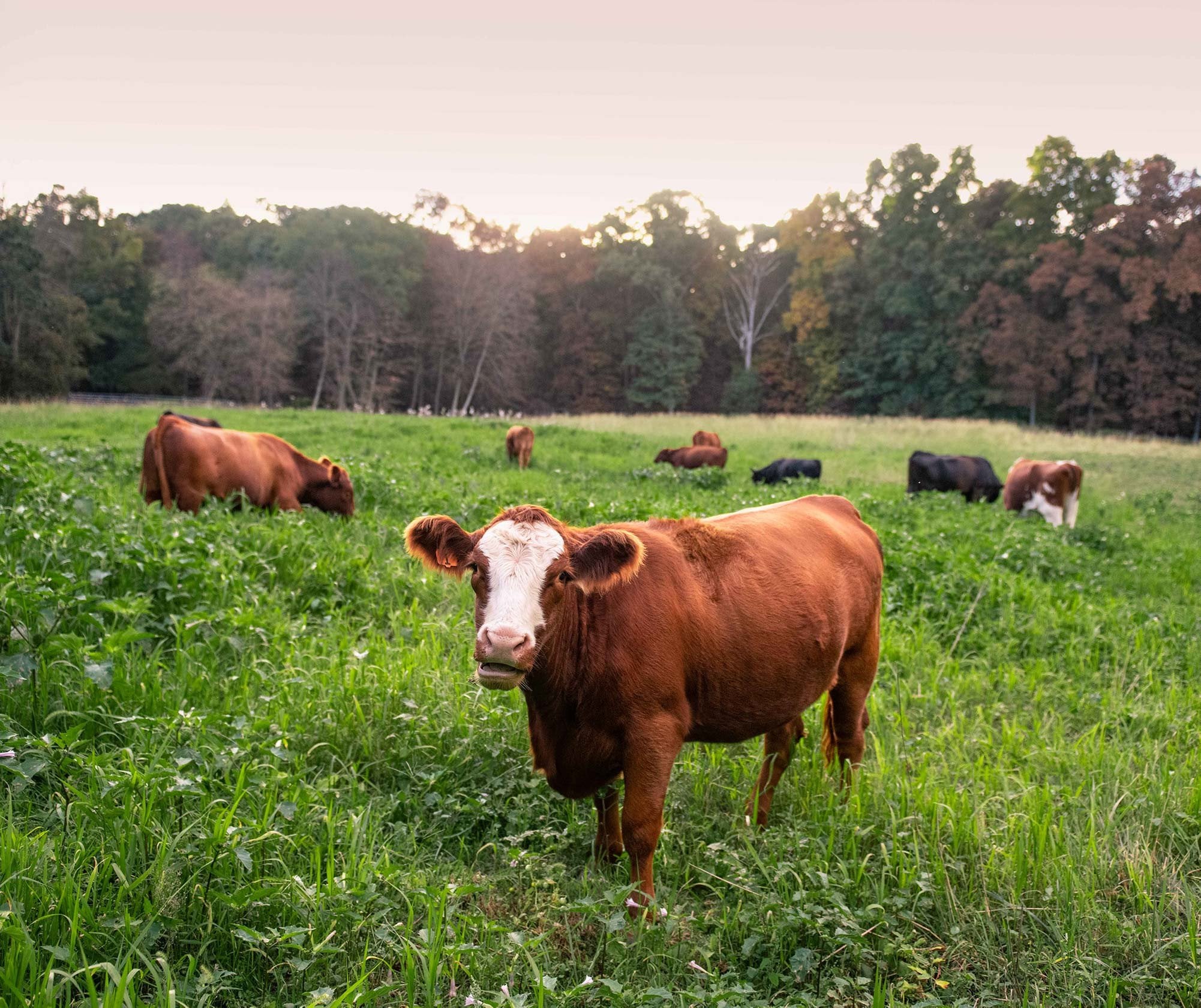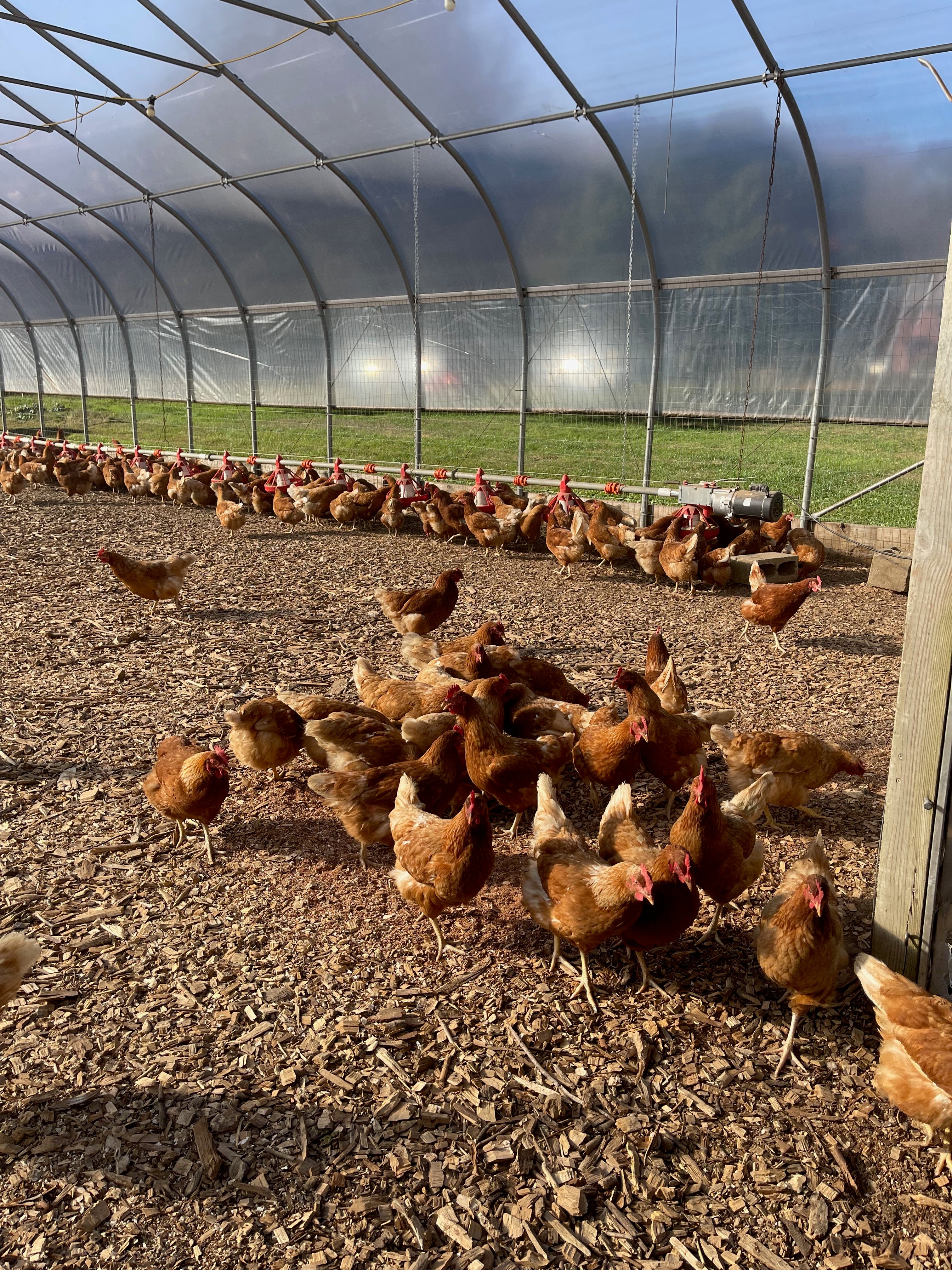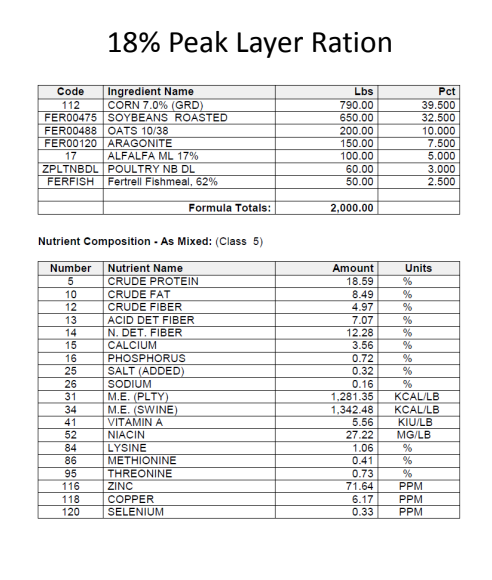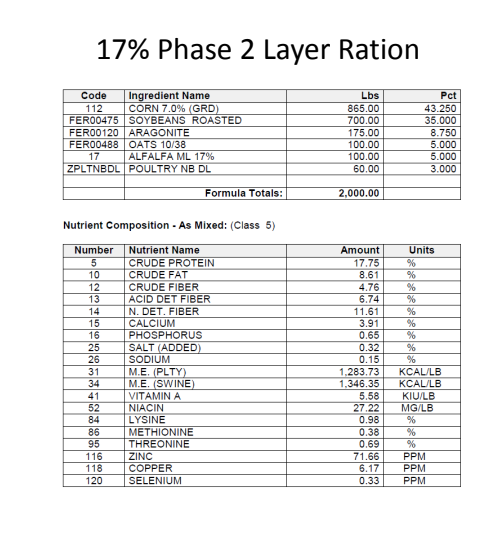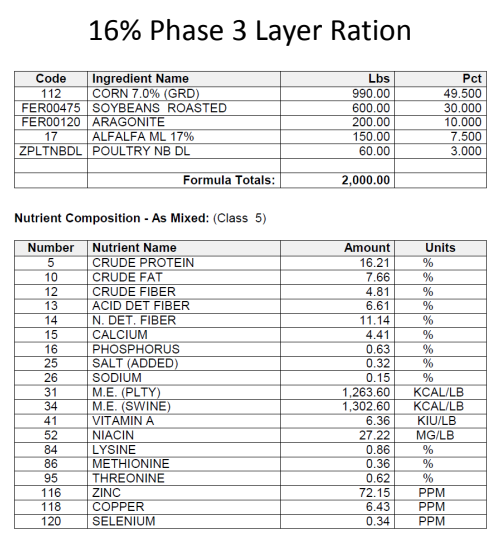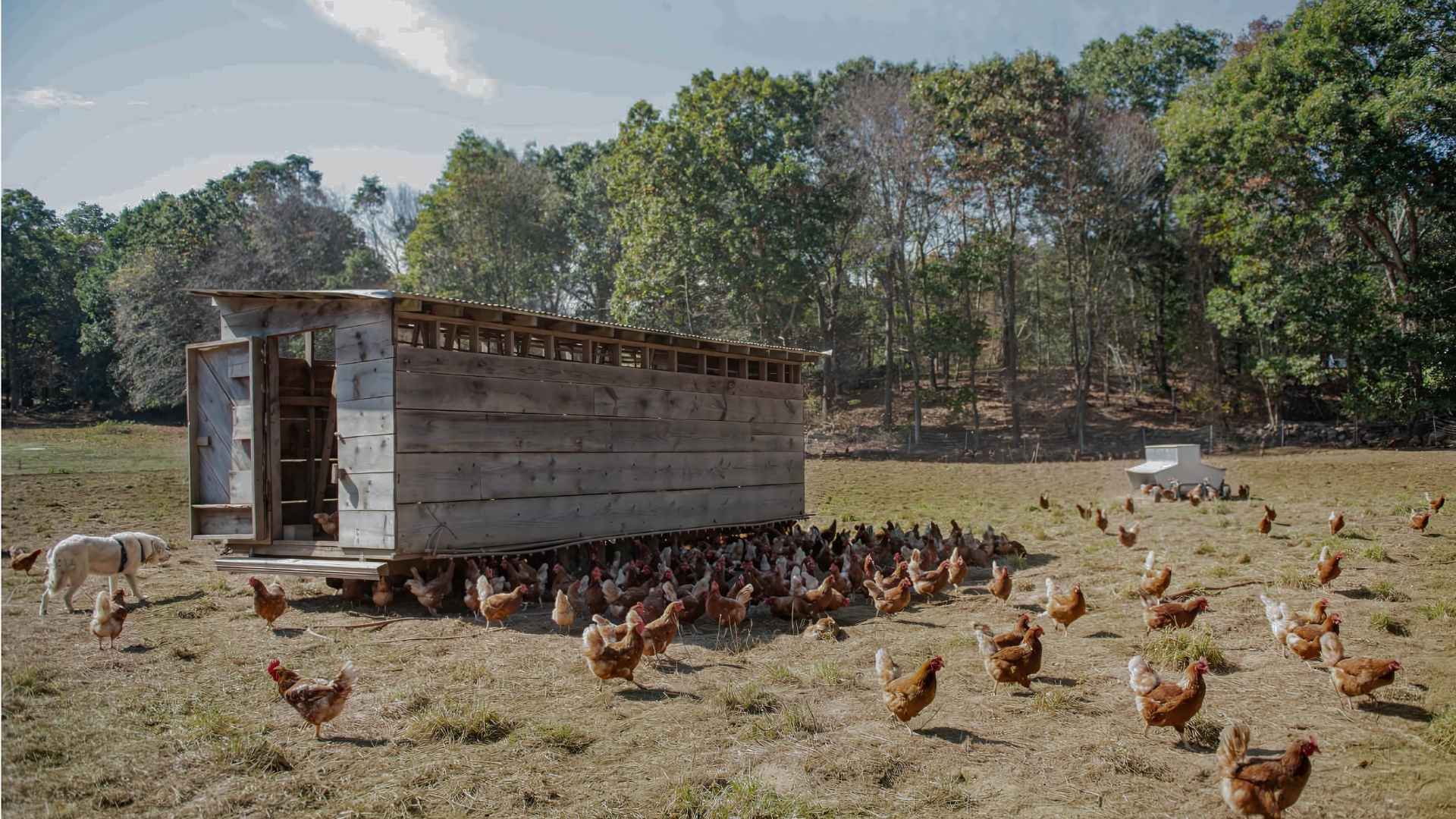
Ready to Lay Pullets
Ready to Lay Pullets
Pat's Pastured
The buying season for Ready To Lay Pullets is over for 2025, but stay tuned for dates and pricing information in 2026.
Frequently Asked Questions about Pullets
Fertrell and Moyer’s Chicks have worked together to raise specialty pullets that meet the needs of pastured poultry growers. They are distributed exclusively by Pat’s Pastured and Badger’s Millside Farm. The pullets you are purchasing were raised on a high quality, non-GMO feed fortified with Fertrell’s Poultry Nutri-Balancer and formulated by Fertrell’s nutrition team. We focused on raising a bird that weighs more than the pullet rearing guideline suggests; this is to help reduce the number of peewee and small eggs. Unlike most ready to lay pullets, these pullets have their full beak, which will help them thrive in a pastured setting.
Use rows to highlight unique features,
sizing information,
Being moved from the pullet house to a new location is stressful on the pullets. To help reduce stress, try to avoid a very brightly lit building when they first arrive. Bright lights will irritate the pullets and increase the likelihood of cannibalism. For example, white or clear plastic coverings will reflect bright light that will be an irritant to pullets.
Magnesium acts as a calming mineral. Adding 5 lbs. of magnesium sulfate (Epsom salt) to the first ton of feed you order can help alleviate stress. You can also add Epsom salt at a rate 0.25% of an already mixed feed. For example, 100 lbs. of feed, add 0.25 lbs of Epsom salt. Stress feed should be used for the first 10 – 14 days after receiving the pullets.
In addition to stress, pecking can be related to overcrowding. Layers need 1.5-2 ft2 per bird indoors minimum. Limited feeder and waterer space can also cause pecking. Ensure that there is enough feeder and waterer space for each of your birds. For linear feeders and waterers, provide a minimum of 3-4 inches per bird. Provide 1 inch per bird for round feeders and waters. For nipple drinkers, 8 - 10 birds per nipple drinker. Water is crucial for egg for egg production and helps drive feed consumption, so making sure there’s enough room for each bird to eat and drink is important for lay rate and optimum egg production.
Before adding artificial light, hens need to weigh enough to safely lay an egg without compromising her growth. The target weight for this group of pullets is a 3.5 lbs. average at 18 weeks. The pullets should be weighed to verify the correct body weight average has been reached prior to light stimulation. On average, a hen needs 14.5-16 hours of light daily to lay consistently, which is the natural day length in the summer. As days shorten, artificial light helps maintain egg production.
Light should be added gradually by adding a maximum of 5 min per day or 30 min per week. The maximum amount of light supplemented should be 18 hours/day. Best results are seen when light is added in the morning.
Avian Influenza Protocols
- Wear clean gloves - no bare hand contact
- Wear clean clothing
- All crates and trucks and trailers (including truck & trailer wheels) must be sanitized before arriving at the farm - host farms can refuse access if you do not follow this guideline. This is for biosecurity.
- In the past some host farms have lent poultry transport crates - please check with those farms it may not be an option this year. If you borrow crates they must be returned, cleaned, and sanitized. You can use bleach.
- VERY IMPORTANT - Host farms and other farmers picking up birds may or may not assist with loading pullets, moving crates or tying down loads. PLEASE MAKE SURE YOU BRING ENOUGH STAFF TO OFFLOAD YOUR BIRDS IN A TIMELY MANNER. The delivery truck is on a tight timeline and cannot wait if you do not offload quickly. In past years we have helped each other unload kindness is shown to your fellow farmers by coming prepared with adequate help to offload and not expecting assistance.
- The hatchery delivery driver may assist with moving crates to the edge of the truck but please keep your social distance from the driver and follow their instructions.
- You will be given a scheduled time before the pick up day. Please be on time. PLEASE BE UNDERSTANDING - traffic and offloading delays can change that time. Plan to make this your only commitment for the day.
- You must bring your own crate or trailer for birds -10-12 fit in standard poultry crates.
- You must pick up the birds on that date - they cannot be held for you.
- This is a complex undertaking and the speed of delivery depends on everyone working together. As a courtesy, no one can leave until all birds are unloaded.
Feeding
Great feed that is properly balanced to meet your layer’s needs is critical to your success. Your pullets are high performance hybrid poultry. They are bred to maximize production and your profits. Poor quality feed will reduce your hens’ production and your profitability.
Below are suggested feed rations for your ready to lay pullets. You can start your ready to lay pullets on an 18% layer feed like the ration below to help achieve peak lay rate. Once your flock is producing 8% Jumbo eggs, the feed can be switched to a 17% Phase 2 layer feed. Attached is also a 16% Phase 3 layer feed. Feed rations should be changed as the number of jumbos increase.
On average, a laying hen will eat 0.25 lbs. of feed per day. These feeds are designed for 4 oz (.25#) of feed consumption per bird per day. Overfeeding or free choice feeding hens will lead to wasted feed and loss of income. Feeding controlled amounts of feed are both beneficial for the hen and more profitable for you.
If you’re ordering a custom feed, adding molasses and Epsom salt to the first feedings will help attract them to feed and reduce stress. You can add 25 lbs of molasses and 5 lbs of magnesium sulfate (as mentioned above) to the first ton of feed ordered for the pullets. The molasses will help attract them to the feed. Magnesium is a calming mineral and will help with the transition to a new environment. Instead of custom ordering a feed to add the molasses and Epsom salt, you can add molasses at 1.25% of the feed and Epsom salt at 0.25% of feed. For example, add 1.25 lbs of molasses and 0.25 lbs of Epsom salt to 100 lbs of feed. This should be incorporated into the feed for best results.
Grit needs to be offered regardless of your soil type and needs to be the correct size for the age of bird. Gran-I-Grit’s “Developer/Layer” grit is the right size for laying hens. You can also mix oyster shells or coarse calcium at a 1:1 mixture with.
